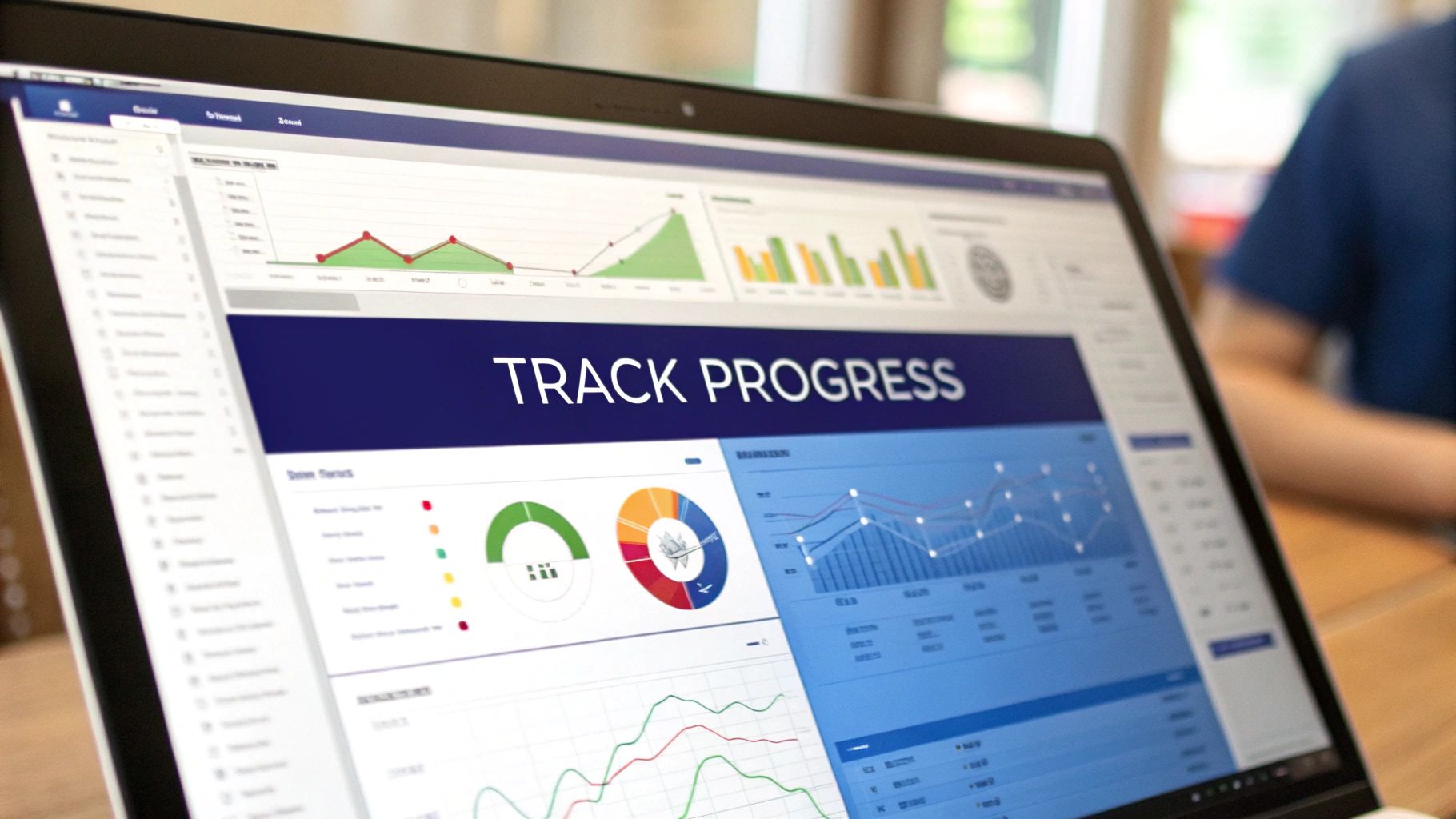Why Smart Teams Are Switching To Online Proofing

The old way of reviewing content through endless email chains and document versions no longer works for modern teams. As deadlines get tighter and collaboration becomes more complex, teams need better solutions. That's why online proofing tools have emerged as the clear choice for organizations that want to speed up their review cycles while maintaining quality. These platforms bring all feedback, versions and approvals into one central hub, making the entire process smoother and more efficient.
Streamlining Feedback and Collaboration
Getting clear, actionable feedback is essential for any creative project. Online proofing tools excel at this by putting all comments and revisions in one place, visible to everyone involved. For instance, when a marketing team works on a new campaign, designers, copywriters, and stakeholders can all provide input directly on the content. No more digging through email threads or reconciling conflicting feedback from different sources. This direct approach leads to better teamwork and a more polished end result.
Enhanced Version Control and Accountability
Keeping track of document versions is one of the biggest headaches in content creation. Online proofing tools solve this by automatically tracking every change and showing who made it. Project managers can easily see who has reviewed what and follow up on bottlenecks. There's no risk of someone working on an outdated version or changes getting lost in the shuffle. The growing adoption of these tools is clear – experts predict the online proofing software market will reach $1.70 billion by 2031, showing how vital they've become for modern teams.
Automating Tasks and Saving Time
One of the most impactful benefits of online proofing tools is how they handle routine tasks automatically. Features like review reminders and status notifications keep projects moving without constant manual updates. Many tools also connect smoothly with project management and content systems, letting teams stay focused instead of juggling multiple apps. These efficiency gains translate to real cost savings, which helps explain the projected market growth rate of 5.66% from 2024 to 2031.
The switch to online proofing isn't just about using newer technology – it's about working smarter. By bringing feedback into one place, tracking versions clearly, and automating routine tasks, these tools help teams create better content more efficiently. For organizations that need to move quickly while maintaining quality, online proofing has become an essential part of staying competitive.
Choosing The Right Online Proofing Solution
Finding the perfect online proofing tool requires more than just checking off a feature list. After recognizing the value these tools bring, you need to carefully evaluate how each option aligns with your team's specific workflow and collaboration style. The wrong choice can create new bottlenecks instead of removing them.
Must-Have Features For Effective Online Proofing
Start by identifying the core features your team truly needs for smooth proofing. Clear annotation capabilities should be at the top of your list – can reviewers easily mark up files with comments and suggestions directly on the content? This direct feedback approach helps avoid confusion and misunderstandings.

Strong version control is another essential element. Your chosen tool should automatically track all changes and clearly show who made what revisions when. This creates a clear history that eliminates the frustration of hunting through email chains or shared folders to find previous versions. For instance, being able to quickly reference past iterations helps everyone understand how a project has evolved.
Integration Capabilities and AI-Powered Advantages
The ability to work smoothly with your existing tools makes a big difference. Consider whether the proofing solution connects with your project management platform, content system, and other key applications. For example, having feedback automatically create tasks in your project tools can save significant time and keep information centralized.
AI features are becoming more common in proofing tools, offering capabilities like automated error detection and content analysis. While these can be valuable additions, focus on how they'll actually improve your specific workflow rather than getting distracted by flashy AI features that don't address real needs. The right tool matches its functionality to your team's practical challenges.
Evaluating User Experience and Avoiding Pitfalls
Pay close attention to user experience – is the interface simple and straightforward for team members of all technical skill levels? Even the most feature-rich tool becomes useless if your team finds it frustrating to use on a daily basis.
Take time to research reviews and conduct thorough trials to spot potential issues. Look carefully at pricing structures to ensure they fit your budget and usage patterns. Consider practical limits like storage space, file sizes, and user counts included in each plan. This detailed evaluation helps prevent unexpected problems and costs down the road. By weighing all these factors thoughtfully, you'll select a proofing tool that truly streamlines collaboration and helps your team create better content through an efficient review process.
Building A Review Process That Actually Works
A well-designed feedback process is essential for getting the most value from online proofing tools. When teams thoughtfully structure how they review and approve content, they can dramatically reduce revision cycles while improving quality. The key is replacing chaotic back-and-forth with clear workflows that keep everyone aligned.
Defining Clear Roles and Responsibilities
Start by establishing who does what in your review process. Team members need to understand their specific responsibilities – whether that's providing feedback, giving final approval, or managing the overall workflow. A content writer might focus on implementing changes while a marketing director makes final decisions. Like a well-rehearsed performance, when each person knows their part and timing, the whole process flows smoothly.
Establishing Clear Deadlines and Expectations
Setting and communicating realistic timelines is crucial for keeping projects on track. Online proofing platforms help by providing a central place to monitor progress and sending automatic reminders when deadlines approach. For example, if a design needs approval by Friday, the system can notify reviewers on Wednesday to submit feedback. This proactive approach prevents bottlenecks and maintains momentum.
Leveraging Online Proofing Tools for Streamlined Feedback
Modern proofing tools make it simple to give specific, actionable feedback. Instead of long email chains, reviewers can comment directly on files, videos and web pages. With version control tracking every change, teams always work from the latest version. This is especially helpful for complex projects like website redesigns involving many stakeholders. Learn more in our article about time-saving techniques for feedback loops.
Improving Communication and Collaboration with Online Proofing Tools
Using online proofing tools brings all feedback into one visible place where stakeholders can discuss changes in real-time. When a client requests design updates, the creative team can ask questions and clarify requirements right within the tool. This transparency builds trust and keeps everyone in sync. The result? Faster approvals, better results, and smoother collaboration.
Successfully implementing online proofing tools requires careful planning and clear communication. By establishing roles, expectations, and collaborative workflows upfront, teams can work more efficiently while creating higher quality deliverables. The investment in structure pays off through reduced revision cycles and better final outcomes.
"Measuring The Impact Of Online Proofing" applying natural flow, transitions, and removing AI cliches:
Measuring The Impact Of Online Proofing

Getting value from online proofing tools requires more than just installing and using them – you need real data to understand their impact. Smart teams track essential metrics to show how these tools improve workflows and deliver tangible benefits. By analyzing specific performance indicators, you can clearly demonstrate the tools' value and make a strong case for their continued use.
Key Metrics For Evaluating Online Proofing Tools
When evaluating the effectiveness of online proofing tools, certain metrics stand out as especially meaningful indicators of success. Here are the most important numbers to track:
- Reduced Revision Cycles: A major win is when teams need fewer rounds of revisions to complete projects. With feedback all in one place, teams can address changes more efficiently and finish work faster. For instance, projects that used to take 5-6 revision cycles may now only need 2-3.
- Faster Time-to-Market: When review processes run smoother, you can launch projects sooner. Getting products and campaigns out quickly gives businesses an edge, especially in fast-moving industries where timing matters.
- Improved Client Satisfaction: Clear communication and quick turnarounds make for happy clients. When clients can easily share feedback and see their input implemented promptly, it builds trust and strengthens relationships.
- Error Reduction: Having all feedback in one spot with proper version control means fewer mistakes slip through. This leads to higher quality work and prevents expensive fixes later in the process.
Calculating Cost Savings and Communicating Value
To show the real worth of online proofing tools, translate metrics into actual cost savings. Look at concrete numbers – like hours saved per project from fewer revisions, resources freed up by better workflows, and money saved by catching errors early. For example, if your team now spends half as much time on revisions, calculate those labor cost savings using team hourly rates.
Present this data in clear, visual ways using charts and graphs that highlight both efficiency gains and financial benefits. Raw numbers are good, but showing the trends and improvements over time makes an even stronger case for the tools' value to leadership.
Building A Framework for Measuring Success
Set up a systematic way to track and analyze your online proofing results. Define which metrics matter most for your team, how you'll measure them, and when you'll review the data. You might track revision cycles weekly and do deeper analysis quarterly. Having this structure helps you consistently evaluate performance and find ways to improve.
Focus on metrics that directly connect to business goals – whether that's faster project completion, higher quality work, or cost savings. Regular measurement helps teams optimize their processes and get maximum value from their online proofing investment.
Creating A Culture Of Efficient Review
Getting your team to embrace online proofing tools is essential for their success. Even the most advanced tools won't deliver results if people don't use them properly. Building a culture that values efficient review processes requires more than just deploying new software – it needs a thoughtful plan for managing this transition.
Overcoming Resistance to Change
When introducing new tools, it's common to face some pushback. Team members who are used to their current ways of working may be hesitant to switch to something new. The key is addressing these concerns head-on. Show people exactly how online proofing will make their daily work easier and better – for example, by eliminating the hassle of searching through endless email threads for feedback. Getting team members involved in choosing the tools also helps build buy-in and reduces resistance to adoption.
Effective Training and Support
Good training is crucial for establishing new work habits. Offer detailed training that covers both how to use the tools and how they fit into the larger review process. Hands-on practice sessions and easy access to help resources give people the confidence to use the platform effectively. Consider designating "power users" within different teams who can provide peer support. This distributed training approach often works better than relying only on formal instruction. You might be interested in: How to master microinteractions in UX design.
Establishing New Habits That Stick
Making a new system stick requires ongoing reinforcement. Make online proofing the standard for all projects, regardless of size. Share success stories showing how the tools speed up revisions and boost client satisfaction. Real examples and data help demonstrate the concrete value. Integrating online proofing with your existing project management systems also makes adoption feel more natural as part of the normal workflow.
Maintaining Momentum and Consistent Adoption
Long-term success requires constant fine-tuning based on team feedback. Check in regularly about what's working well and what needs improvement with the online proofing process. This allows you to adjust workflows and tackle any issues that come up. Recognizing team members who use the tools effectively and celebrating key achievements helps sustain motivation. By nurturing open dialogue and continuous learning, you can drive consistent adoption across your organization – creating smoother feedback cycles, faster revisions, and consistently high-quality work.
What's Next In Online Proofing Innovation

Online proofing tools have already made huge strides in improving team collaboration and content review. But exciting new developments are on the horizon that will take these capabilities even further. Let's explore the key trends and technologies that will shape the next evolution of online proofing – making feedback more efficient, automating routine tasks, and helping teams produce better content.
The Rise of AI-Powered Features in Online Proofing Tools
Smart AI features are beginning to enhance how teams review and approve content. Today's tools can automatically spot errors that go beyond basic spell-checking – they can identify inconsistencies in brand voice, flag potential compliance issues, and even suggest improvements based on past feedback patterns. For instance, AI can alert teams to problematic messaging in marketing materials before campaigns go live. The system learns from previous rounds of feedback to help teams avoid common pitfalls and speed up the review process.
Enhanced Collaboration Through Integrated Workflows
The next phase of online proofing focuses on smooth connections between the tools teams use every day. Picture being able to give feedback directly within design software, eliminating the need to switch between different platforms. Or having approved content flow automatically into your publishing system with no manual steps required. These tight integrations between proofing, design, and content management tools will help teams stay focused and get more done with less effort.
Moving Beyond Static Files: The Future of Interactive Proofing
While current tools work well for reviewing documents and images, the future is about dynamic content. Teams need ways to evaluate interactive elements like website prototypes, web apps, and 3D models. Soon you'll be able to click through a live website mockup and comment on how features actually work, not just how they look. This hands-on approach gives everyone a better sense of the end product and helps catch issues earlier when they're easier to fix.
Practical Advice for Navigating the Future of Online Proofing
With technology changing so quickly, it's important to be strategic about adopting new proofing capabilities. Focus on solutions that directly address your team's real challenges – like reducing revision rounds or getting content approved faster. The most valuable features are ones that fit naturally into how your team already works and that people can easily learn to use. By thoughtfully choosing tools that solve specific problems, you can help your team work more efficiently without getting overwhelmed by every new trend.
Ready to experience the future of online proofing? Try BugSmash today and transform your content review process. Start your free trial now!




